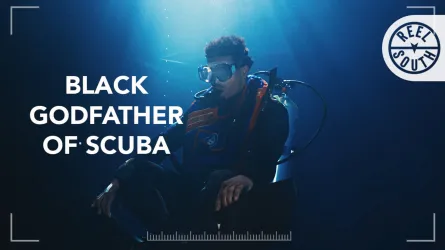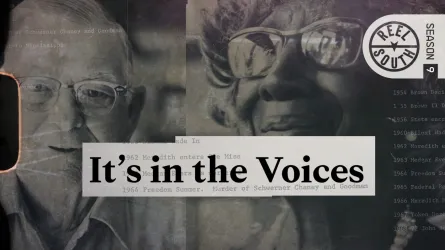In "Seadrift," filmmaker Tim Tsai captures the maelstrom of hostilities against Vietnamese refugee fishermen along the Texas Gulf Coast after a fatal shooting in 1979. "Seadrift" is set during the early days of Vietnamese refugee arrival in America and the film examines this turbulent yet little-seen chapter of American history and explores its consequences that continue to reverberate today.
Before the Reel South premiere of "Seadrift," we connected to Tsai to get his insight into the creation of the film and what he hopes people will get out of the story, which holds more meaning today than ever before.
This interview has been edited for clarity.
What inspired you to make your film?
I first learned about the Seadrift shooting incident in 2010, through a chapter in the book “Asian Texans,” which chronicles past Asian immigrant waves into Texas, and I was surprised I had never learned about it in school or elsewhere. I was floored by the trauma these Vietnamese refugees had endured, through a decades-long war and the perilous escape from their homeland, only to face new hostilities in their adopted country.
Texas is a state that’s immensely proud of its heritage, but the experiences and legacy of people of color have largely been erased from its history, and representation of Asian Americans in the South in mainstream media has been virtually nonexistent.
The story of what happened in Seadrift and its aftermath comprise a critical chapter in our civil rights history that I felt was important to capture and make accessible, a portrayal of refugee experience that goes beyond the token victim-or-success story we see too often.
How did you get connected to your subject?
Finding our storytellers was a big challenge, particularly as an outsider examining an event that deeply divided a small community. Working through a first-generation Vietnamese translator who was a refugee himself proved instrumental in convincing the Vietnamese subjects in the film to participate, and through time and persistence, we were able to gather enough personal narratives from both sides of the conflict to create this film.
Were there any parts you wish you could have included in the film? If so what were they?
There are many engaging stories that didn’t make it into the final film, but my favorite is probably the experiences of crabber Bằng Nguyễn. From being the first Vietnamese to settle in Seadrift to marrying a local Mexican American woman and eventually separating due to cultural barriers, to becoming a horse jockey in Baltimore - the unexpected elements in his life and strength of his character can merit its own film!
What was your favorite behind-the-scenes moment?
I loved going out on the water and watching crab and shrimp fishermen work. It’s an incredibly labor-intensive, repetitive job that demands early and long working hours (the fishermen often cut their days short because the crew and I looked tired!) - but there’s also a beauty in the natural environment and in the work that’s undeniable. It’s an experience I’ll never forget.
What do you hope people learn/hope they take away from your film?
My hope is that they see the ugliness of hatred, but also the possibility of reconciliation and healing in the face of tragedy. I also hope they find sympathy for and perhaps even solidarity with those who are different from them — across politics, race, gender, orientation, abilities, and the many other different divides that separate us.
Is there anything else you'd like to share with the Reel South audience?
Working on this film, it has become clear to me that the rural South is one of the most misrepresented and under-resourced regions in our country, and it’s no accident that many in these communities feel neglected by the government and misunderstood by the media. I hope that films, writings, and other forms of independent storytelling will continue to expand the mainstream understanding of what the South was, is, and can be, in all its nuance and diversity.
What advice would you give other filmmakers or others interested in documentary film?
Enjoy the journey — despite the long list of credits at the end, filmmaking can be a lonely endeavor, and it is often a long, winding path from idea to completion. Find ways to celebrate both the successes and failures along the way.
Category
Share


